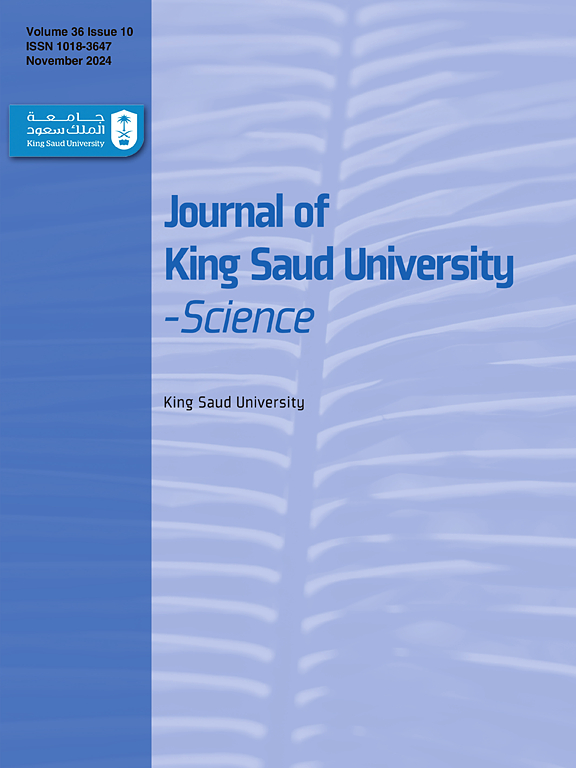Cytotoxic effect of polystyrene nanoplastics in human umbilical vein endothelial cells (HUVECs) and normal rat kidney cells (NRK52E)
IF 3.6
3区 综合性期刊
Q1 MULTIDISCIPLINARY SCIENCES
引用次数: 0
Abstract
Plastics play a crucial role in nearly each aspect of societal production and everyday life, therefore making them one of the most widespread pollutants on a global scale. Because synthetic plastics are not entirely biodegradable, they often remain in the environment and fragment into micro- and nanoplastic particles. The detrimental impacts of nanoplastics on the environment and human health have received substantial worldwide interest in recent years. However, the effects of nanoplastics on human health have not yet been fully explored. Our study aimed to investigate the cytotoxic effects of polystyrene nanoplastics on two distinct mammalian cell lines: normal rat kidney cells (NRK52E) and human umbilical vein endothelial cells (HUVECs). Results showed that polystyrene nanoplastics generate cytotoxicity in both NRK52E and HUVECs in a concentration- and time-dependent manner. Additionally, polystyrene nanoplastics induced pro-oxidant levels (e.g., reactive oxygen species and hydrogen peroxide) and reduced antioxidants (glutathione content and glutathione peroxidase enzyme activity) in both types of cells. We also found that polystyrene nanoplastics cause apoptosis in both NRK52E and HUVECs, as shown by the activation of the caspase-3 enzyme and the loss of mitochondrial membrane potential. Interestingly, it was noticed that the vulnerability of HUVECs cells against polystyrene nanoplastics was a little higher than that of NRK52E cells. Also, the cell toxicity caused by polystyrene nanoplastics in NRK52E and HUVECs was effectively alleviated by co-exposure to a reactive oxygen species inhibitor, N-acetyl-cysteine. This suggests that oxidative stress could be one of the possible pathways by which polystyrene nanoplastics cause cell toxicity. The present work warrants future study to explore the toxicity mechanisms of polystyrene nanoplastics in appropriate in vivo models.
聚苯乙烯纳米塑料对人脐静脉内皮细胞(HUVECs)和正常大鼠肾脏细胞(NRK52E)的细胞毒性作用
塑料在社会生产和日常生活的几乎每个方面都发挥着至关重要的作用,因此成为全球范围内最广泛的污染物之一。由于合成塑料不能完全被生物降解,它们经常会残留在环境中,并碎裂成微型和纳米塑料微粒。近年来,纳米塑料对环境和人类健康的有害影响受到了全世界的广泛关注。然而,纳米塑料对人类健康的影响尚未得到充分探讨。我们的研究旨在调查聚苯乙烯纳米塑料对两种不同哺乳动物细胞系的细胞毒性效应:正常大鼠肾细胞(NRK52E)和人脐静脉内皮细胞(HUVECs)。结果表明,聚苯乙烯纳米塑料对 NRK52E 和 HUVEC 产生的细胞毒性具有浓度和时间依赖性。此外,聚苯乙烯纳米塑料还诱导两种细胞中的促氧化剂水平(如活性氧和过氧化氢)和抗氧化剂还原水平(谷胱甘肽含量和谷胱甘肽过氧化物酶活性)。我们还发现,聚苯乙烯纳米塑料会导致 NRK52E 和 HUVEC 细胞凋亡,具体表现为 Caspase-3 酶的激活和线粒体膜电位的丧失。有趣的是,研究人员注意到,HUVECs 细胞对聚苯乙烯纳米塑料的易损性略高于 NRK52E 细胞。此外,NRK52E 和 HUVECs 细胞在同时暴露于活性氧抑制剂 N-acetyl-cysteine 后,聚苯乙烯纳米塑料引起的细胞毒性得到了有效缓解。这表明氧化应激可能是聚苯乙烯纳米塑料导致细胞毒性的可能途径之一。本研究值得今后在适当的体内模型中探讨聚苯乙烯纳米塑料的毒性机制。
本文章由计算机程序翻译,如有差异,请以英文原文为准。
求助全文
约1分钟内获得全文
求助全文
来源期刊

Journal of King Saud University - Science
Multidisciplinary-Multidisciplinary
CiteScore
7.20
自引率
2.60%
发文量
642
审稿时长
49 days
期刊介绍:
Journal of King Saud University – Science is an official refereed publication of King Saud University and the publishing services is provided by Elsevier. It publishes peer-reviewed research articles in the fields of physics, astronomy, mathematics, statistics, chemistry, biochemistry, earth sciences, life and environmental sciences on the basis of scientific originality and interdisciplinary interest. It is devoted primarily to research papers but short communications, reviews and book reviews are also included. The editorial board and associated editors, composed of prominent scientists from around the world, are representative of the disciplines covered by the journal.
 求助内容:
求助内容: 应助结果提醒方式:
应助结果提醒方式:


